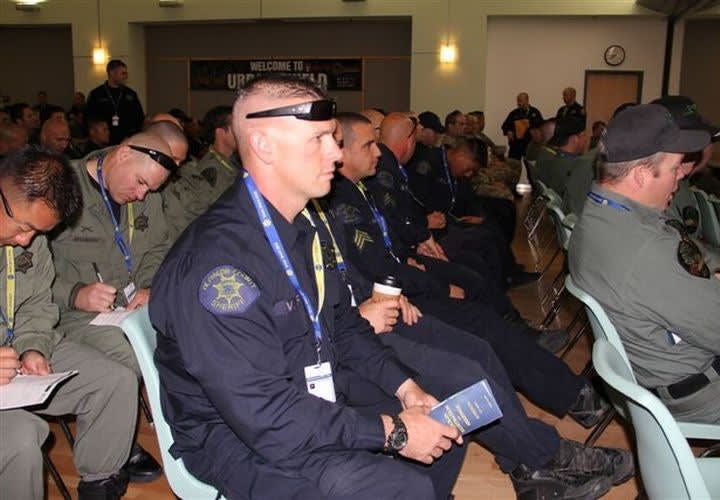Donated vans with identifying team placards are assigned to each of the 30 participating SWAT teams. Each van is driven by an ACSO deputy/liaison responsible driving the team, and looking out for their safety and welfare throughout the 48-hour event. This is an awesome responsibility — one that each and every ACSO deputy/liaison willingly takes on with enthusiastic dedication and professionalism.
There are also scores of other vital support personnel without whom Urban Shield couldn't happen. These range from scenario-site safety officers, logistics, role players, tactical evaluators, and many others most never know about. Their jobs are to ensure everything runs smoothly and safely. I can only imagine the amount of time, effort, and logistical coordination required to ensure all 30 teams running through all 30 scenarios run smoothly and safely.
Coordinating it all is a series of command centers, each tasked with demanding duties and responsibilities. Everything from communications, logistics to medical, monitoring, scheduling, and resolving any glitches that might occur. And since Urban Shield takes place in real-world sites/settings, there's always the possibility of some for-real, real-world incident to occur.
The central command center oversees five sub-command centers, assigned to five geographical areas. The capabilities of the central command center are beyond impressive, featuring the newest and best technology available today. Much of this technology is so new that Urban Shield is where it's getting its first "real-world" trial test.
The central command center is capable of simultaneously monitoring numerous sites in real-time. Amazing, considering the sites are scattered across 700 square miles, and many are in isolated, "inaccessible" locations.












